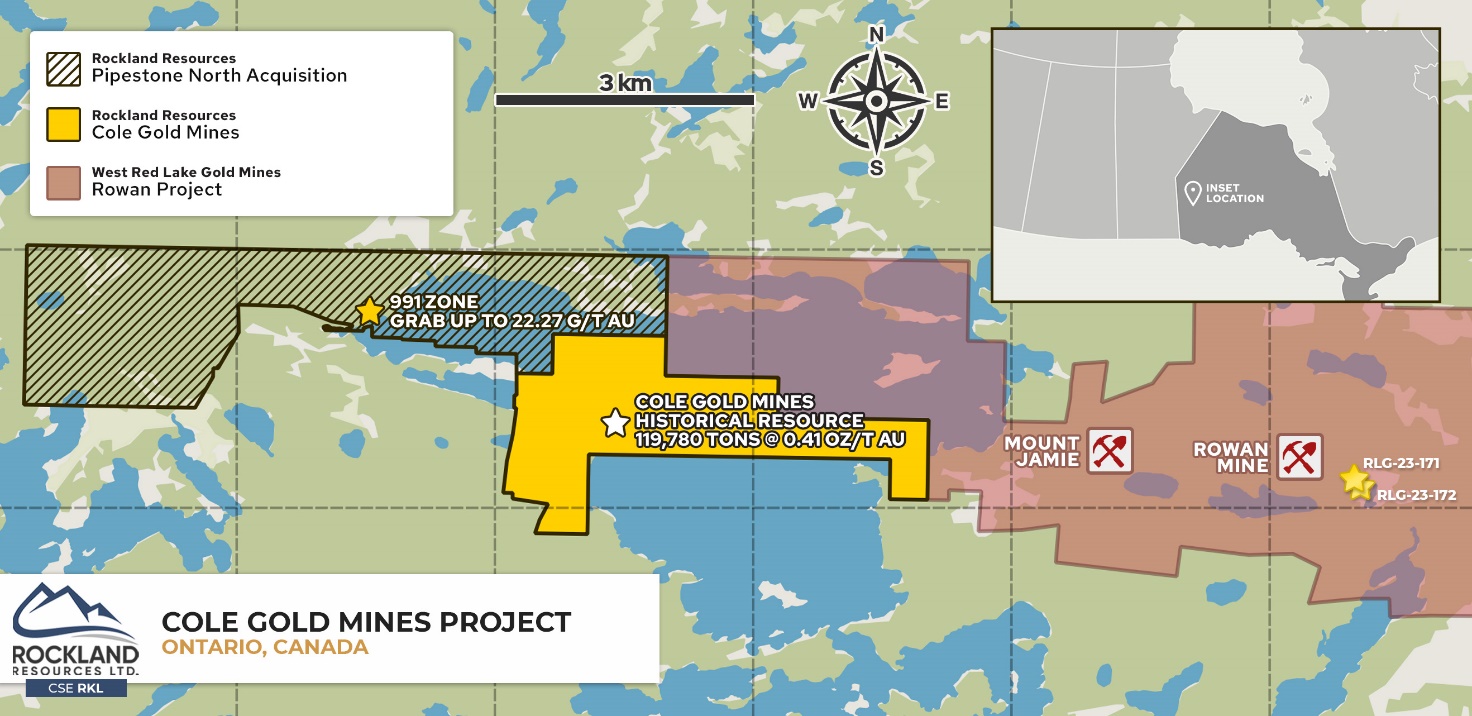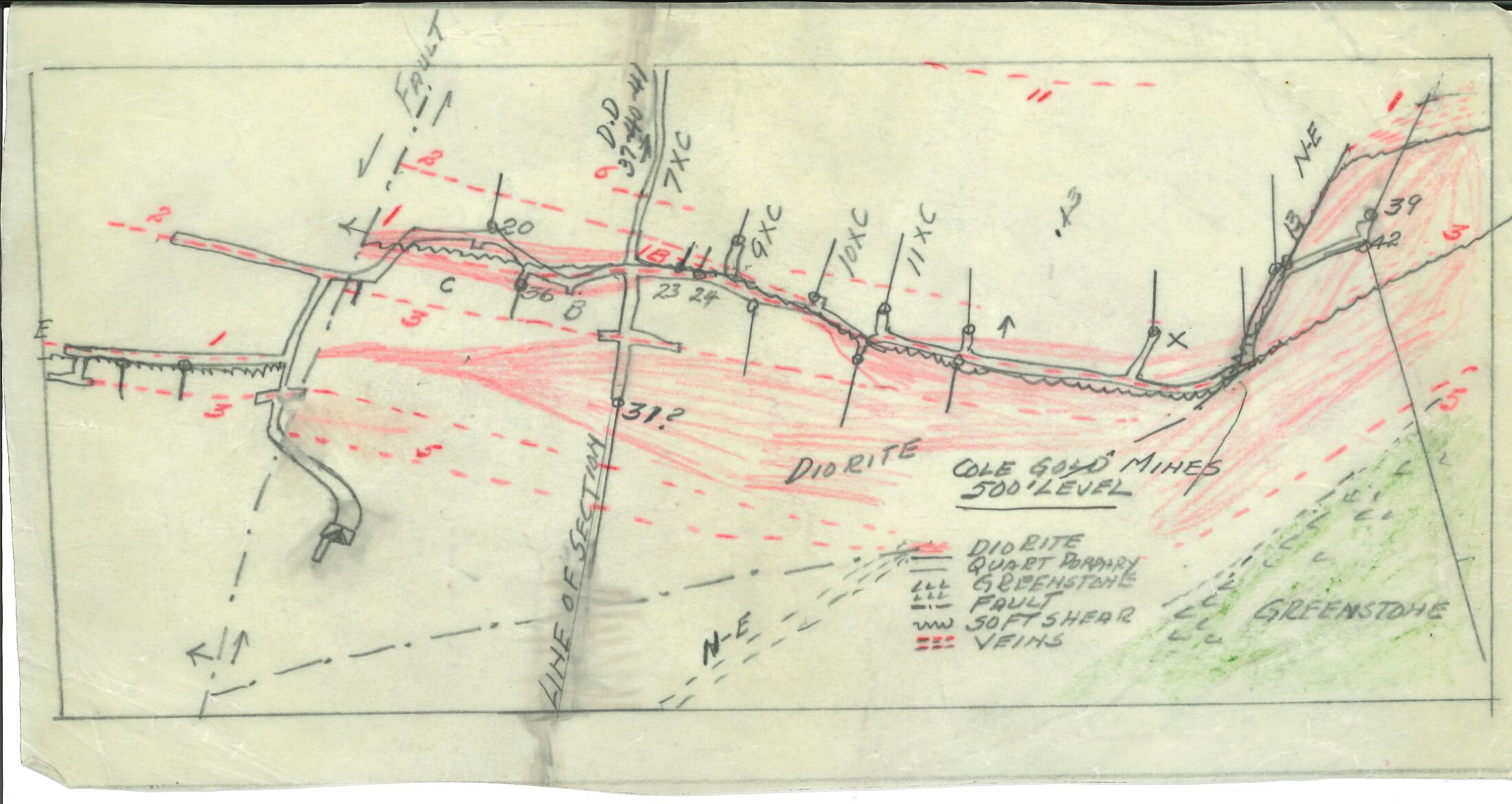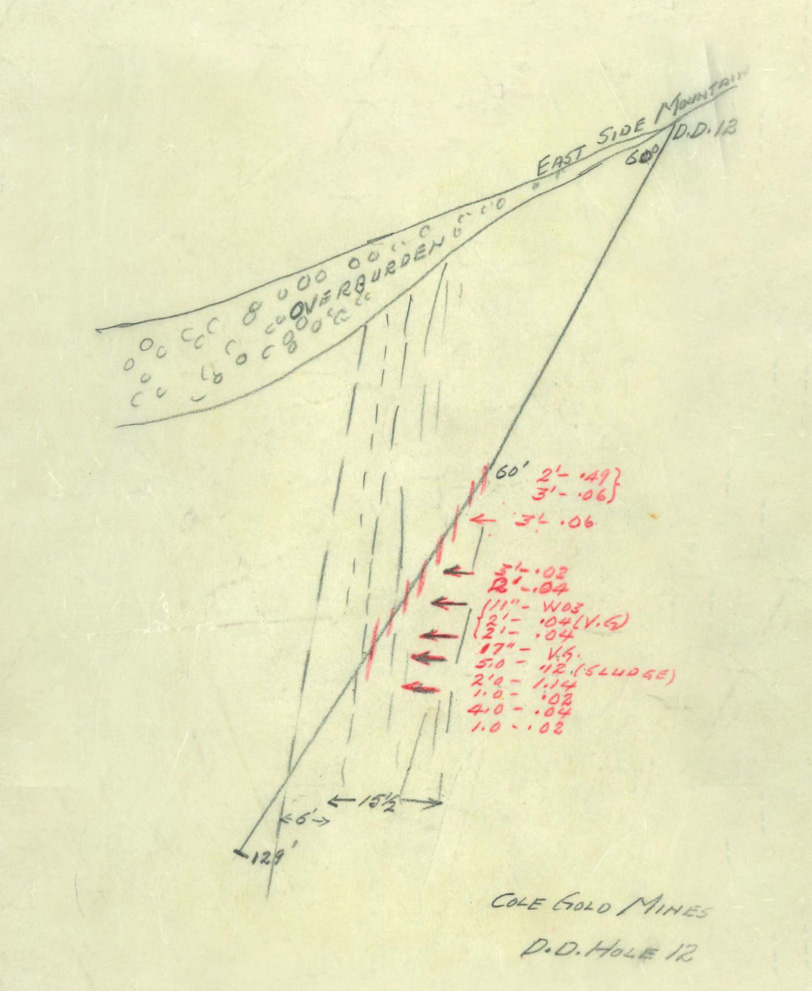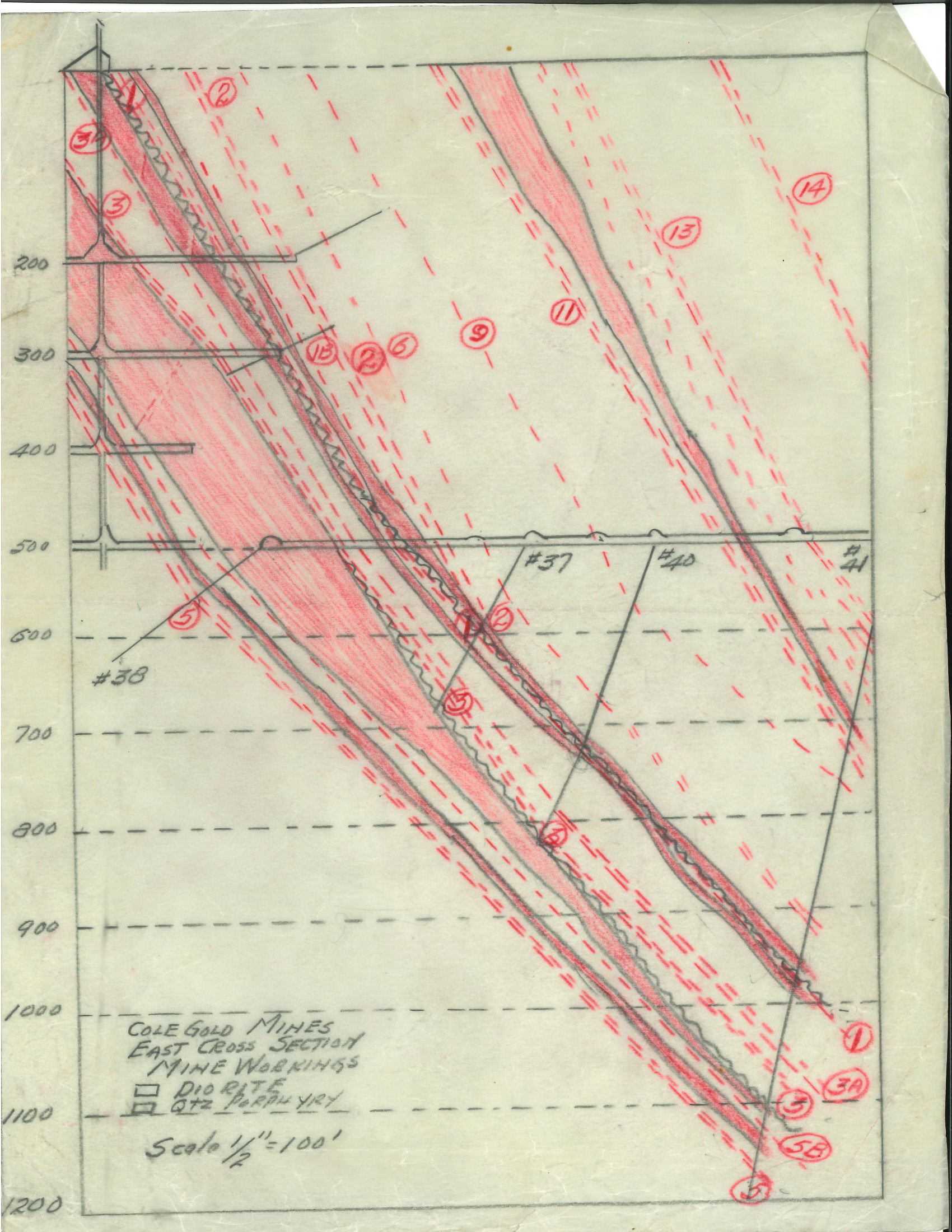Overview
The Cole Gold Mines project totals approx. 1,438 ha located in the prolific Red Lake Mining District adjoining West Red Lake Gold Mines Ltd. The Red Lake district is renowned for high-grade gold in structures with significant depth extent and has produced over 30 million ounces of gold.

A History of High-grade Gold
The Cole Gold Mines Property has been family owned and developed dating back to the 1930’s, where an exploration shaft was developed to a depth of 530 feet with underground development on 4 levels. An additional historical longitudinal section resource estimate of 108,663 tonnes at 12.8 g/t Au* was estimated by Kerr Addison Mines in 1973. Kerr Addison also discovered historic high grade gold intersections up to 68.8 g/t Au over 0.46 metres in sulphide mineralized quartz veins in sheared quartz porphyry.
Rockland is the first and only public company to own the project.
Exploration History
Cole Gold Mines Ltd. developed an exploration shaft to a depth of 530 feet with underground development on 4 levels in the 1930’s.
Historical exploration found high-grade gold intersections up to 2.2 oz/t Au over 1.5 feet in sulphide mineralized quartz veins in sheared quartz porphyry drilled by Kerr Addison Mines. A historical longitudinal section resource estimate of 119,780 tons at 0.41 oz/t Au*.
*These historical estimates do not meet current standards as defined by NI 43-101 and therefore should not be relied upon.


New Historical Data
A deep dive into public historical records found data from a drill hole completed in the 1930’s. Hole DDH-12, drilled by Cole Gold Mines and located approximately 450 meters southwest from the historical underground workings, intersected over 3.5 meters of vein quartz in schist with gold values in quartz and visible gold in the fractures. This surface hole was drilled to the southeast at a -60° dip, and is very shallow, at only 39 meters in depth, with the intercept approximately halfway down the hole.
The importance of this drill hole was noted in a 1953 report* by Wilfred P. Mackle, Mining Engineer, when describing an interpreted fold located southwest of the mine shaft area, with an axis striking northeast:
Mackle Report
“It is along the axis of this fold that the ore bodies located occur and a further significant feature is provided by DDH-12 from surface which indicated the possibility of a major ore occurrence striking parallel to the fold axis as opposed to the ore bodies in the shaft area which strike roughly east-west. I rather emphasize the importance of this fold pattern because it is a very important feature of the Cochenour-Campbell-Dickenson ore deposits, and probably also with the Madsen area, and the conclusive evidence of a major fold occurring in the proximity of the presently known ore bodies is, in my opinion, of major significance.”
In the conclusion of the report, when describing this underground development, the author states: “The many parallel gold bearing zones is, in the opinion of the writer, a most important feature. As shown on the cross section there are nine (9) gold bearing zones indicated across a horizontal width of 750 feet. On surface there are as many more and all warrant attention”.
Rockland continues to compile historical geophysical and geological data over the Cole Gold Mines project in preparation for a future exploration program.

Project Image Gallery

